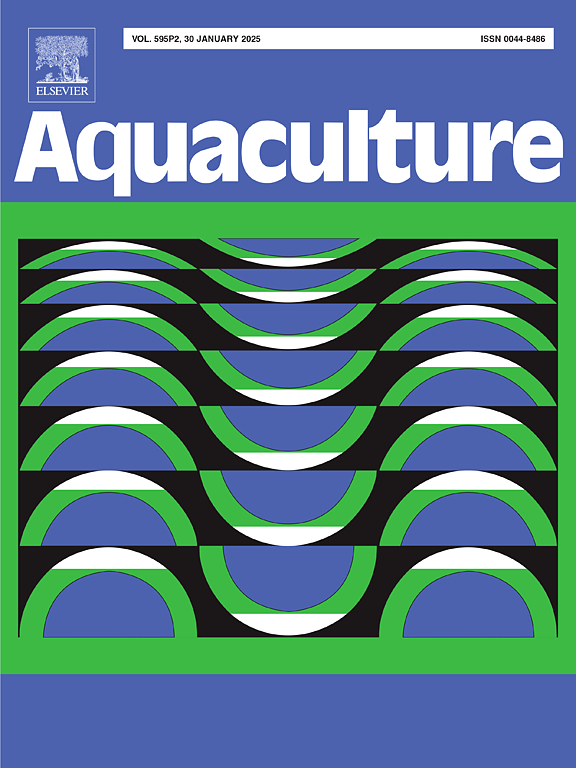Effects of floating bed plants on remediation of eutrophic ponds and cultured species of Cyprinus carpio
IF 3.9
1区 农林科学
Q1 FISHERIES
引用次数: 0
Abstract
In recent decades, cyanobacterial blooms have emerged as a major constraint on the sustainable development of freshwater aquaculture. Due to their capacity for biological self-purification, ecological floating beds have been widely utilized in the remediation of eutrophic water bodies. However, most existing studies have focused on the nutrient removal capacities of floating bed plants, with limited attention to their effects on algal community dynamics. In this study, three common aquatic plants—Eichhornia crassipes, Pistia stratiotes, and Ipomoea aquatica—were selected to investigate their overall effects on eutrophic pond remediation. All three species exhibited good tolerance to cyanobacterial blooms and significantly enhanced the anti-oxidative stress response of Cyprinus carpio. The cyanobacterial inhibition rates were 87.92 %, 70.07 %, and 96.32 %, respectively, whereas the relative abundance of green algae increased, most notably with I. aquatica. It is speculated that, in addition to plant-derived allelochemicals, toxin-degrading bacteria from the phyla Proteobacteria, Bacteroidetes, Myxococcota, and Bdellovibrionota may have contributed to the suppression of cyanobacteria. These findings improve understanding of the ecological roles of different floating bed plants in eutrophic pond restoration and offer a theoretical basis for species selection and future application of floating bed systems in aquatic ecosystem management.
浮床植物对富营养化池塘及鲤养殖种修复的影响
近几十年来,蓝藻华已成为淡水水产养殖可持续发展的主要制约因素。生态浮床由于具有生物自净化能力,已广泛应用于富营养化水体的修复。然而,现有的研究大多集中在浮床植物的养分去除能力上,对其对藻类群落动态的影响关注有限。本研究以三种常见的水生植物——石竹(eichhornia crassipes)、皮鱼(Pistia stratiotes)和水草(Ipomoea aquatica)为研究对象,研究了它们对富营养化池塘修复的整体效果。3个品种均表现出良好的蓝藻华耐受性,并显著增强鲤鱼的抗氧化应激反应。对蓝藻的抑制率分别为87.92%、70.07%和96.32%,而绿藻的相对丰度则有所增加,其中水藻的抑制率最高。据推测,除了植物来源的化感物质外,来自变形菌门、拟杆菌门、粘球菌门和蛭弧菌门的毒素降解细菌可能对蓝藻的抑制也有贡献。这些发现有助于认识不同浮床植物在富营养化池塘修复中的生态作用,为浮床植物的物种选择和未来在水生生态系统管理中的应用提供理论依据。
本文章由计算机程序翻译,如有差异,请以英文原文为准。
求助全文
约1分钟内获得全文
求助全文
来源期刊

Aquaculture
农林科学-海洋与淡水生物学
CiteScore
8.60
自引率
17.80%
发文量
1246
审稿时长
56 days
期刊介绍:
Aquaculture is an international journal for the exploration, improvement and management of all freshwater and marine food resources. It publishes novel and innovative research of world-wide interest on farming of aquatic organisms, which includes finfish, mollusks, crustaceans and aquatic plants for human consumption. Research on ornamentals is not a focus of the Journal. Aquaculture only publishes papers with a clear relevance to improving aquaculture practices or a potential application.
 求助内容:
求助内容: 应助结果提醒方式:
应助结果提醒方式:


